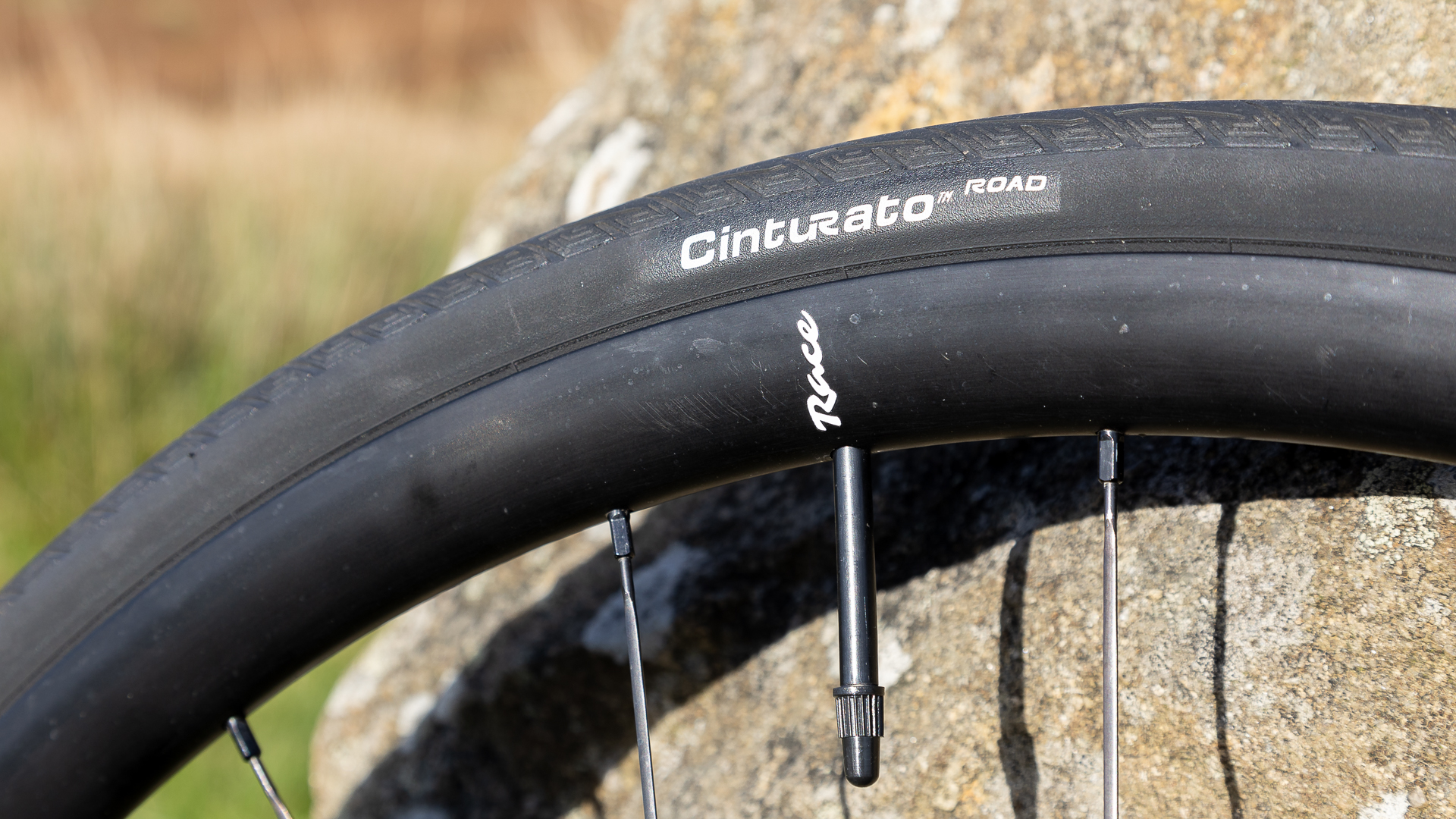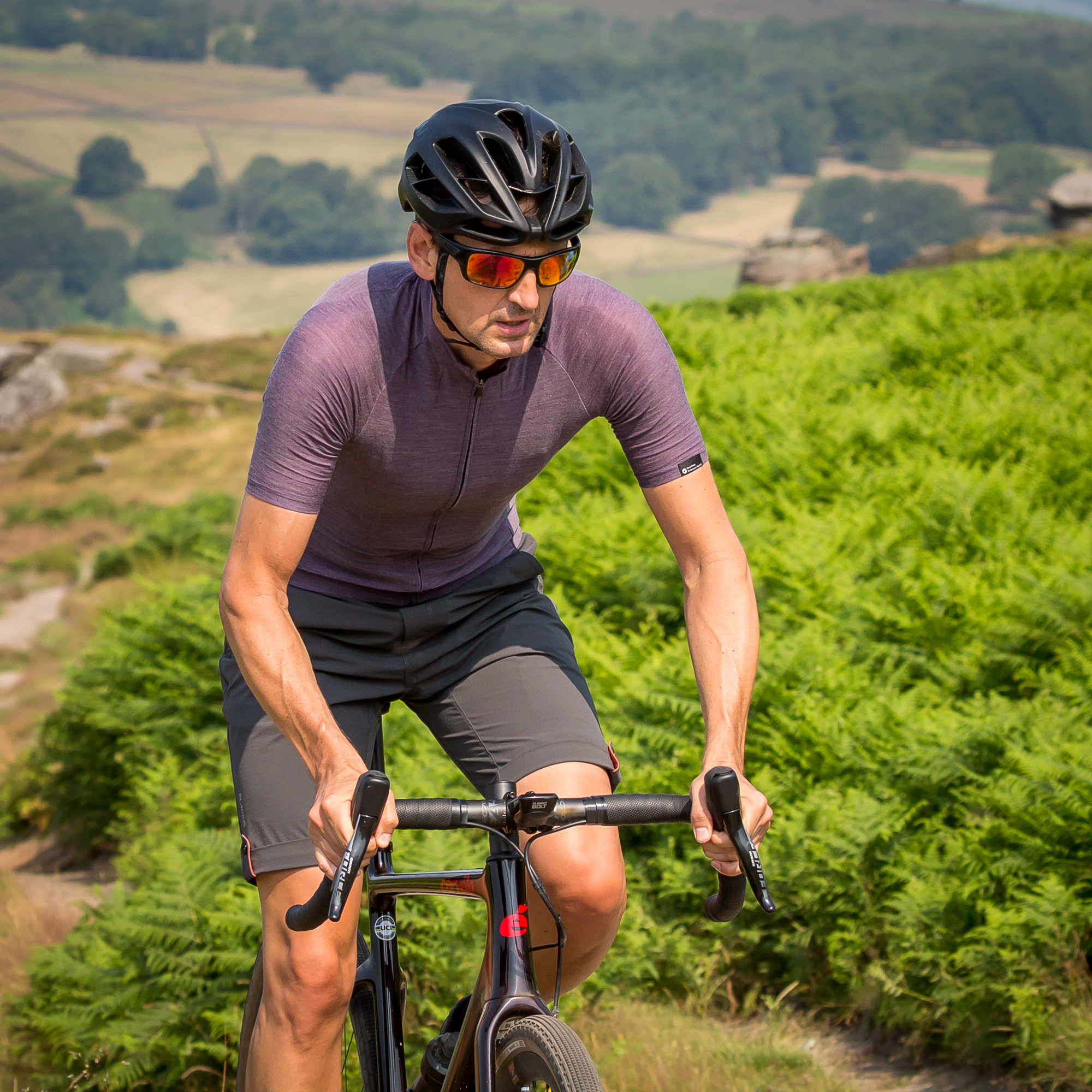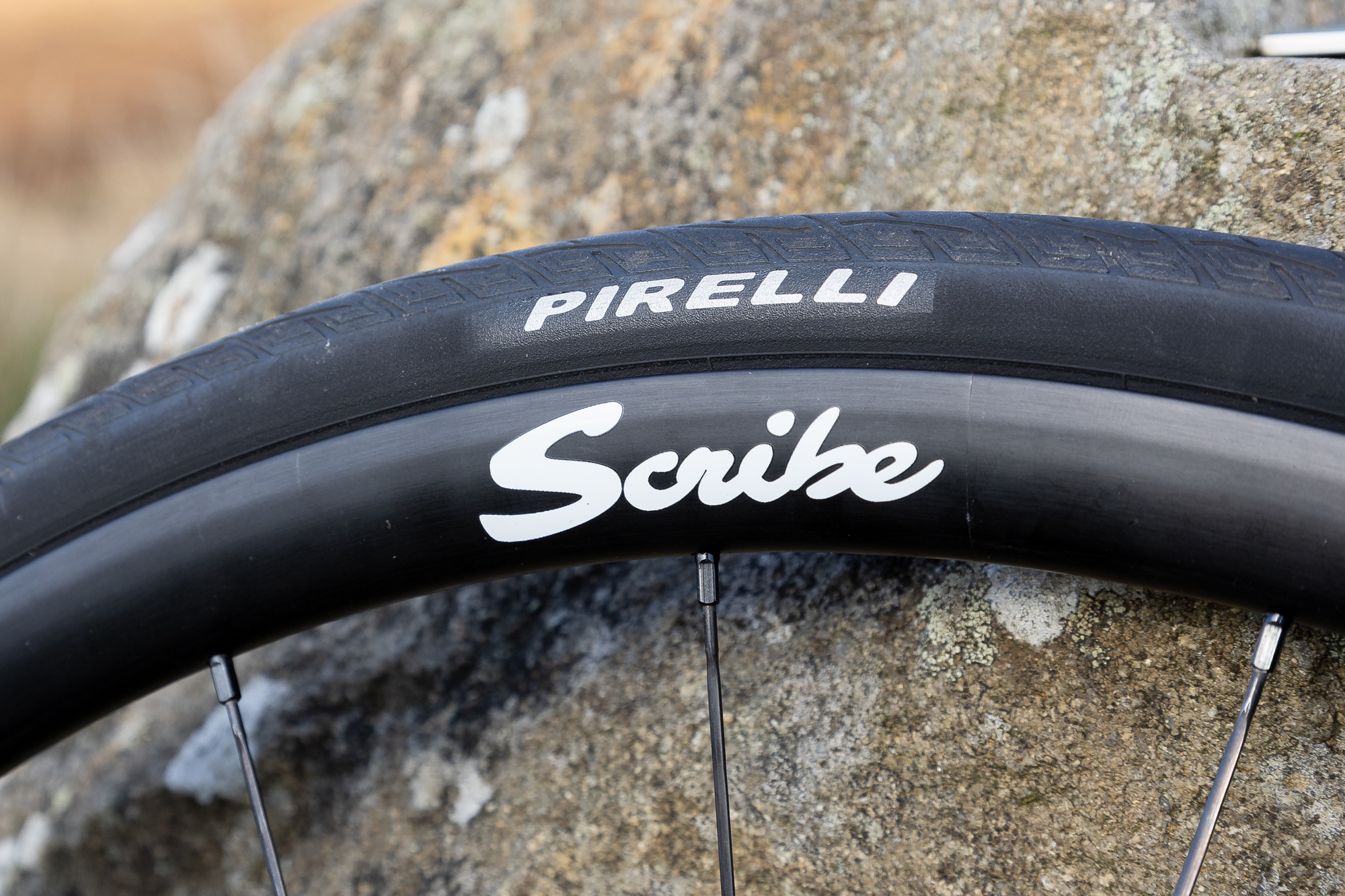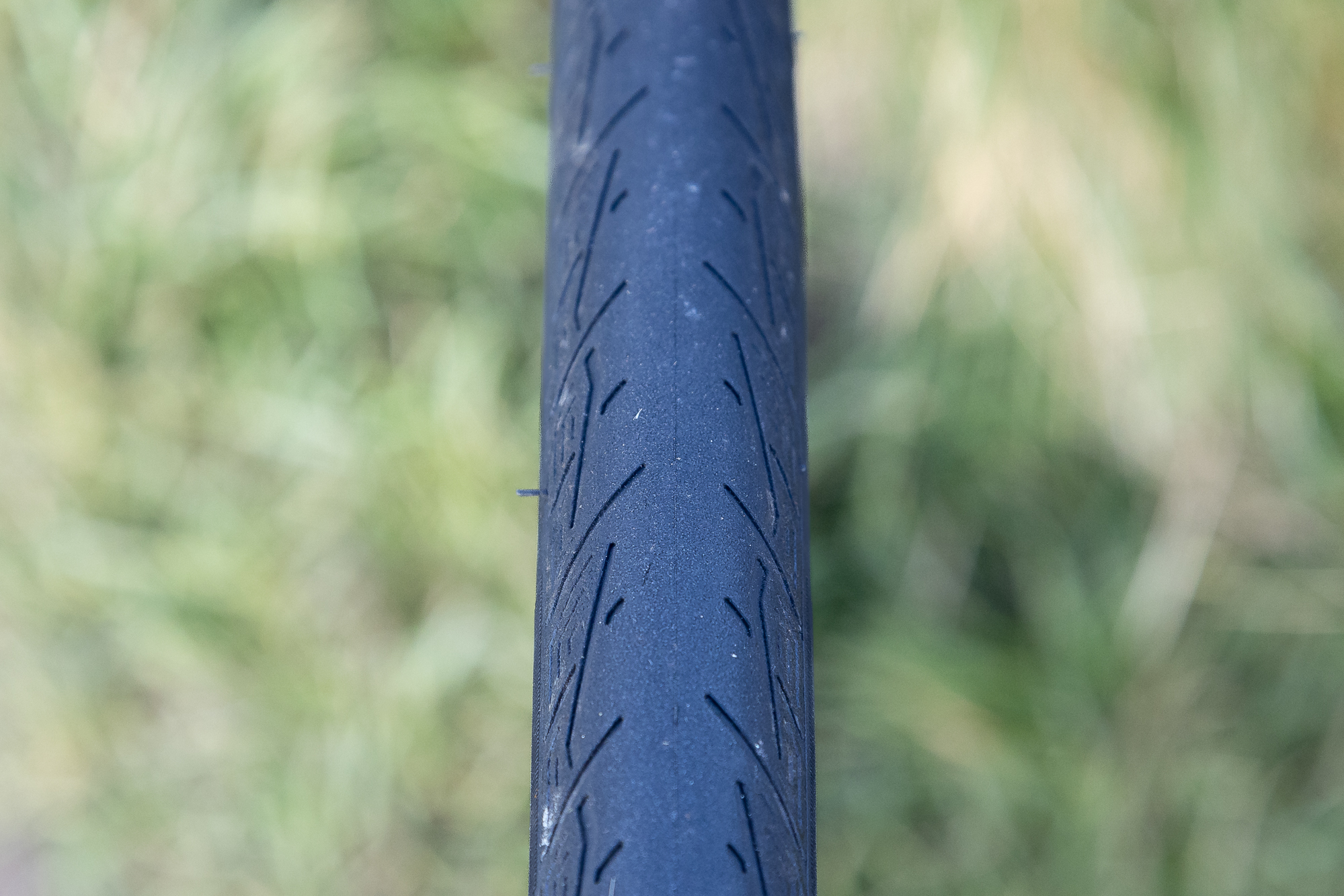Pirelli Cinturato Road Clincher tire review - puncture resistance with tube-type convenience
As an all-weather workhorse, the Cinturatos are grippy, reliable and spare you the faff of tubeless

If you are looking for a durable, puncture-resistant tube-type road tire that won’t suck the joy out of training or commuting, then Pirelli’s Cinturato Road tire is definitely worth considering. It balances speed, longevity and toughness nicely but size up if possible for more comfort.
-
+
Easy to fit
-
+
Good depth of rubber
-
+
Bead-to-bead puncture protection
-
-
Stiff sidewalls
-
-
Narrower than billed
You can trust Cycling Weekly.

Pirelli’s Cinturato Road tire sits at the durable end of its six-tire road line-up, claiming to offer "maximum protection and comfort". Available in 700c by 26, 28, 32 and 35mm widths, its main selling points are the bead-to-bead puncture protection and durability, so it can be used all year round without worry.
It is also not tubeless compatible, so it provides a tube-type option for all-weather riders, making it ideal for commuting and long-distance training rides. Pirelli even suggests that it can perform as a light gravel tire too, presumably in the 35mm version rather than the 26mm.
We've now put some solid testing miles into Pirelli’s Cinturato Road tire to see how they shape up against the best road bike tires - but before we share our findings, we'll start with the tech-y details.
Pirelli Cinturato Road Clincher: construction

The high degree of protection comes courtesy of Pirelli’s TechWALL+ which uses multiple layers of reinforcement under the rubber to prevent anything from penetrating through to the inner tube and causing a puncture. There is also a fabric and nylon breaker that extends all the way from one bead to the other adding complete protection to the sidewalls.
SmartNET Silica rubber is used for Pirelli’s three endurance-orientated road tires (Cinturato Road, Cinturato Velo and P Zero Road), and provides durability, low rolling resistance and grip to the tire. Apparently, this is due to the ‘anisotropic orientation’ of the rubber’s particles - unsurprisingly I couldn’t verify this for myself! There is also quite a pronounced tread pattern on the shoulders of the tire which alludes to their potential for any weather / any surface use.
Pirelli Cinturato Road Clincher: the ride

My first impression out of the box was one of robustness - there is certainly no shortage of rubber which bodes very well for the tire's longevity. Despite this, my 28mm choice only weighed 350 grams which I don’t think is too bad for its intended use (20 grams more than claimed by Pirelli though).
After having had more than my fair share of battles with tubeless tires on my road bike over the years, some of which have involved blood, plenty of sweat and even sharp knives, it was a pleasure to fit these to my wheels with just a single tire lever. I think that there is a strong counter-argument to the general puncture resistance of tubeless tires with the fact that if you do get a puncture in one on a cold winter’s ride then it is far more difficult to fix than it is with a tube-type tire. Having had a few such experiences, I am considering switching back to inner tubes over the winter.
In terms of ride quality, the Pirelli Cinturato Road was less supple than some tires I have used recently, thanks no doubt to the depth of rubber and the stiff, puncture-resistant sidewalls. They also measured up narrower than their billed 28mm which won’t have helped, coming in at 26.9mm on my 17mm internal width wheels (Pirelli say that a 19mm internal width is needed for the full 28mm). I am a big fan of wide tires so this was a bit disappointing especially when other Pirellis have generally been true to size - I wish I’d opted for the 32mm version. Good news though for anyone with tight clearances under fenders. Pirelli’s tech data suggests that they will pump up to a genuine 28mm if used on 19mm internal width rims.
Despite running them at just 60psi (I’m 73kg), they rode as if pumped up much harder, and so the tires lacked a bit of road feel which slightly undermined ultimate cornering confidence - but then again these are durable training or commuting tires, not crit racing rubber.
Rolling resistance felt fine; the tires didn’t feel draggy or turgid at all and in fact, the stiff sidewalls gave the ride a rather sprightly feel a bit like having old-school tubs pumped up to 100psi. I have no punctures to report despite a good few kilometers on rough, gravelly lanes and there aren’t any noticeable nicks or cuts in them either after about 500km so I have no doubt that they will last a decent distance.
Pirelli Cinturato Road Clincher: Value and conclusion
At $64.90 / £54.99 the Pirelli Cinturato Road tire is not a cheap option, especially as it isn’t tubeless compatible or particularly lightweight, but it does offer plenty of technology to keep you rolling rather than sitting by the side of the road. Comfort and grip felt good for this genre of tire, and the depth of rubber promises excellent longevity too, making them decent value for money. Just size up as much as possible for maximum plushness.

Thank you for reading 20 articles this month* Join now for unlimited access
Enjoy your first month for just £1 / $1 / €1
*Read 5 free articles per month without a subscription

Join now for unlimited access
Try first month for just £1 / $1 / €1
Get The Leadout Newsletter
The latest race content, interviews, features, reviews and expert buying guides, direct to your inbox!
Tim Russon is a writer and photographer who has worked in the outdoor and cycling industry for over 20 years. He can’t remember a time when he didn’t own a bike and has road, gravel, mountain and retro bikes in the shed. His favourite place to ride is the Dolomites, a simply stunning area which has breathtaking views and incredible roads combined with lovely food and great wine.
He prefers long, hot climbs in the big mountains, but as he lives on the edge of the Peak District he has to make do with short, cold climbs most of the time instead.
-
 'This is the marriage venue, no?': how one rider ran the whole gamut of hallucinations in a single race
'This is the marriage venue, no?': how one rider ran the whole gamut of hallucinations in a single raceKabir Rachure's first RAAM was a crazy experience in more ways than one, he tells Cycling Weekly's Going Long podcast
By James Shrubsall Published
-
 Full Tour of Britain Women route announced, taking place from North Yorkshire to Glasgow
Full Tour of Britain Women route announced, taking place from North Yorkshire to GlasgowBritish Cycling's Women's WorldTour four-stage race will take place in northern England and Scotland
By Tom Thewlis Published
-
 Positive signs for UK bike industry as Halfords cycling sales grow
Positive signs for UK bike industry as Halfords cycling sales growRetailer admits that the impact of Donald Trump's tariffs remains to be seen
By Tom Thewlis Published